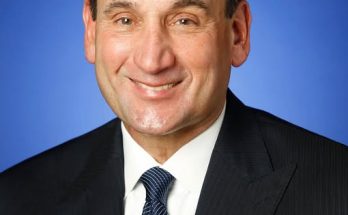The Marshall Faulk Effect: How the Detroit Lions Were Motivated to Take a Risk by the Hall of Famer’s Legacy
The NFL, as a league, has always been driven by legacies and the pursuit of greatness. Players, coaches, and franchises alike are motivated by the echoes of past legends, seeking to replicate or surpass their achievements. One such legacy that has reverberated through the league—and notably influenced the Detroit Lions—is that of Marshall Faulk. The Hall of Famer’s unique blend of versatility, intelligence, and dynamic playmaking set a new standard for what a running back could be. This legacy inspired the Lions to take a calculated risk in building their offense, hoping to replicate the kind of success Faulk embodied. This essay explores the profound impact of Marshall Faulk’s career on the Detroit Lions, examining how his legacy motivated their strategic decisions and shaped their identity in the modern NFL.
Marshall Faulk’s impact on football transcended his statistical achievements. While he amassed over 12,000 rushing yards and 6,800 receiving yards, his true influence was on the way the running back position was conceptualized. Traditionally, running backs were primarily ground gainers, focused on rushing and blocking. Faulk shattered that mold by blending elite rushing skills with exceptional receiving ability out of the backfield, effectively becoming a dual-threat weapon.
Drafted by the Indianapolis Colts in 1994 and later flourishing with the St. Louis Rams, Faulk redefined the offensive playbook. He was the centerpiece of the Rams’ “Greatest Show on Turf,” a high-octane offense that relied heavily on speed, versatility, and misdirection. Faulk’s ability to catch passes like a wide receiver and still be a dominant runner forced defenses to adapt in unprecedented ways. The running back became not just a rusher but a multi-dimensional threat.
Faulk’s legacy encouraged teams to rethink offensive scheming, making it clear that a dynamic back could be the fulcrum of an explosive offense. His influence permeated beyond the Rams, inspiring franchises across the league, including the Detroit Lions.
To understand the “Marshall Faulk Effect” on the Lions, it’s important to consider the franchise’s historical context. The Lions, one of the NFL’s oldest teams, had long struggled with consistency and success. Despite moments of brilliance and notable stars such as Barry Sanders, their overall trajectory had been marked by instability and unfulfilled potential.
Barry Sanders, arguably the greatest Lions player, retired abruptly in 1999. Sanders was a dynamic runner with unique elusiveness but was not known for his involvement in the passing game to the extent of Faulk. After Sanders, the Lions sought to reinvent their offense to adapt to the evolving NFL landscape, where dual-threat running backs were becoming more valuable.
By the mid-2000s and 2010s, the Lions had endured multiple coaching changes, quarterback controversies, and an overall lack of offensive identity. This environment made the organization ripe for risk-taking, motivated in part by the desire to capture some of the magic and success seen in teams like the Rams, where a versatile running back was central to offensive prowess.
Faulk’s legacy did not just influence how teams drafted or utilized running backs—it motivated the Lions’ front office and coaching staff to rethink player evaluation and offensive philosophy. Recognizing that a traditional power-running game was no longer sufficient, the Lions embraced the idea of a more versatile offense featuring dynamic playmakers who could contribute in multiple facets of the game.
The Lions’ drafting strategy reflected this shift. For instance, when they selected running backs like Jahvid Best in the 2010 NFL Draft, they sought a player who embodied elements of Faulk’s style—speed, receiving ability, and agility. Best was viewed as a potential game-changer, capable of impacting both the rushing and passing game. Unfortunately, injuries curtailed his career, but the motivation behind the pick was clearly influenced by Faulk’s blueprint.
Later, the Lions took similar risks on players like Theo Riddick and Ameer Abdullah, backs known for their receiving prowess and versatility. The goal was to assemble an offense that could stress defenses in multiple ways, reminiscent of how Faulk’s presence on the field forced opposing coordinators to adjust.
Coaching decisions also mirrored the “Faulk effect.” The Lions incorporated more spread formations and two-back sets, encouraging their running backs to catch passes and run routes. This approach aligned with the modern NFL’s emphasis on speed, mismatches, and space creation. The Lions recognized that just grinding out yards on the ground was insufficient—they needed a weapon that could extend plays and exploit defenses in the passing game.
This philosophy was a direct nod to Faulk’s style and effectiveness. The Lions’ offensive playbooks began emphasizing quick reads, screens, and route combinations involving running backs as primary receiving threats. These were clear strategic shifts motivated by watching the success Faulk had brought to his teams.
Taking risks in the NFL can be a double-edged sword. While Faulk’s legacy provided a compelling template, replicating his impact was far from guaranteed. The Lions faced several challenges in translating that inspiration into sustained success.
Players like Jahvid Best showed promise but were hampered by injuries, limiting their ability to fulfill the role the Lions envisioned. Similarly, other versatile backs on the roster struggled to consistently perform at elite levels or lacked the complete skill set Faulk possessed. This reality underscored the difficulty of finding a perfect Faulk-like player.
The Lions also faced inconsistency at quarterback and offensive line issues, which complicated the execution of a dynamic offense. Without solid quarterback play, the benefits of a dual-threat running back were muted. Faulk’s success was also aided by exceptional talent around him, including Kurt Warner and a strong offensive line, which the Lions struggled to match.
The Lions’ willingness to take risks often clashed with their broader identity challenges. Coaching changes and front-office turnovers created instability that made it difficult to fully implement a Faulk-inspired offensive philosophy over multiple seasons. Continuity, a crucial factor for building complex offenses, was lacking.
However, even amid these challenges, the risk-taking itself was a valuable step for the franchise. It signaled a move away from stagnant offensive thinking and an embrace of innovation, inspired by the possibilities Faulk’s career showcased.
While the Lions’ direct attempts to emulate Faulk’s style met mixed results, the Hall of Famer’s influence continues to ripple across the league, including in Detroit. Modern NFL offenses increasingly prioritize versatile backs who can be involved in both the running and passing game, a strategy that the Lions have integrated more fully in recent years.
For instance, players like D’Andre Swift, drafted by Detroit in 2020, embody many elements of Faulk’s game. Swift’s ability to catch passes out of the backfield, accelerate in open space, and create big plays parallels Faulk’s unique skill set. The Lions’ commitment to using Swift as a versatile weapon demonstrates the lasting impact of Faulk’s legacy on their approach.
Moreover, the Lions’ embrace of offensive creativity and the recognition that a running back can be a central offensive catalyst owes much to Faulk’s trailblazing career.
Ultimately, the “Marshall Faulk Effect” represents more than just an influence on how the Lions use running backs. It symbolizes a franchise’s willingness to embrace risk, innovate, and attempt to rewrite its narrative. Faulk’s legacy provided a blueprint for success that was bold, multi-dimensional, and exciting—qualities the Lions desperately wanted to embody.
This legacy motivated the Lions to move beyond tradition and take chances on players and schemes that promised a dynamic future. While not all these risks yielded immediate success, the ambition and vision they inspired laid a foundation for the team’s continued evolution.
Marshall Faulk’s career changed the NFL’s perception of the running back position, inspiring teams like the Detroit Lions to pursue a new offensive identity centered on versatility and playmaking. Motivated by Faulk’s legacy, the Lions took calculated risks in drafting and scheming, aiming to replicate the dynamism and impact Faulk brought to the field.
Though the path was fraught with challenges, injuries, and inconsistency, the Lions’ willingness to embrace this approach signaled a significant shift in their organizational mindset. The “Marshall Faulk Effect” remains a testament to how a Hall of Famer’s legacy can motivate a franchise to take risks, innovate, and strive for greatness.
As the Lions continue to build their team, the lessons learned from Faulk’s career and their own risk-taking journey will remain a guiding force—showing that legacy is not just about the past, but a catalyst for future ambition and boldness.
If you want, I can also add specific player profiles, detailed stats, or focus more on particular seasons or coaches that were pivotal in this risk-taking approach. Would you like me to expand or adjust anything?



